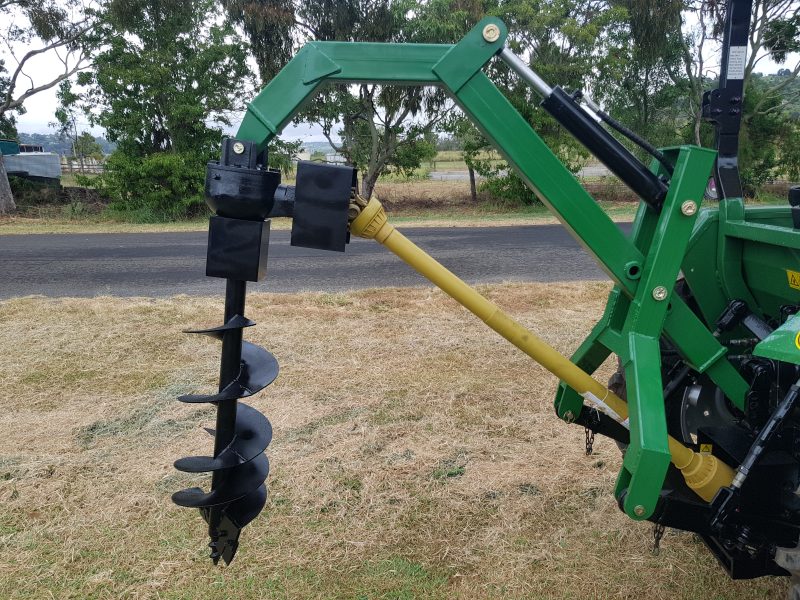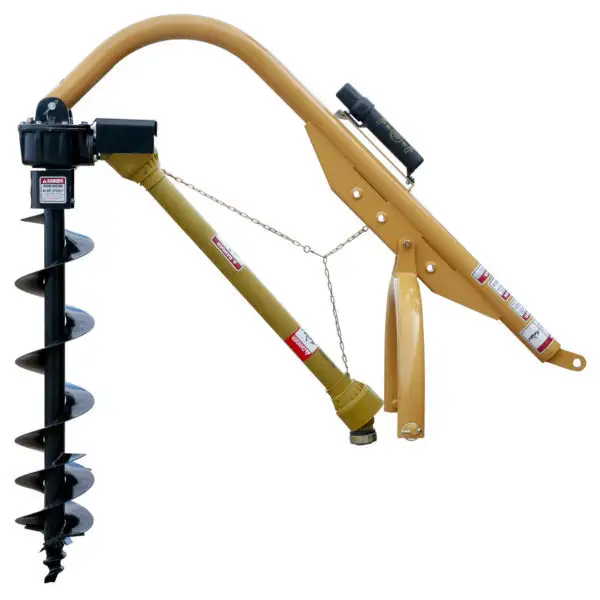Product Description
1. More than 18 years experience of garden machinery
2. Factory direct price
3. Have 2 or 3 new model every year
4. Nice quality,Full refund in case of bad quality
5. Small orders welcome
6. Quick shipping within 10 days
7. VIP Buyer One-Stop Service
8. Engineers Provide technical services.
|
Model No. |
JS-EATU43 |
|
Engine type |
2 Stroke, Single Cylinder, Forced Air-cooled, Gasoline Engine |
|
Operate type |
one-man |
|
Engine Model |
1E44F-5 |
|
Gear box type |
bronze gear |
|
Displacement |
52CC |
|
Start method |
recoil starting |
|
Horse Power |
1.65KW /8000 R.P.M. |
|
Carburetor |
Diagramph Type |
|
Ignition System |
Electronic CDI |
|
Reduction ratio |
34:1 |
|
Drill length |
800mm |
|
Drill rotation speed |
260RPM |
|
Noise |
101db |
|
Fuel: Oil mixture ratio |
Petrol/ 2 cycle oil mixture ratio 25:1 |
|
Fuel Tank Capacity |
1 Liter |
|
Auger bit (Dia.) |
100/200/250//300mm |
|
Packing Unit |
Engine :1 pc/ Ctn ; Auger bit : 1Pc / Ctn |
|
N. W.(200mm two-leaf bit) |
15.1kgs |
|
Meas.(Engine) |
53*42.5*33cm |
|
100mm driller |
82*13*12cm |
|
150mm driller |
82*16*16cm |
|
200mm driller |
82*23*22cm |
|
300mm driller |
82*31*31cm |
/* March 10, 2571 17:59:20 */!function(){function s(e,r){var a,o={};try{e&&e.split(“,”).forEach(function(e,t){e&&(a=e.match(/(.*?):(.*)$/))&&1
| Feature: | 2-Stroke |
|---|---|
| Bit Diameter(mm): | 200 |
| Style: | Hand-Held Earth Auger |
| Power Source: | Petrol / Gas |
| Horse Power: | 1.65 Kw /8000 r.p.m. |
| Fuel Tank Capacity: | 1.2L |
| Samples: |
US$ 129.2/Piece
1 Piece(Min.Order) | |
|---|
| Customization: |
Available
| Customized Request |
|---|

What factors should be considered when selecting the right post hole digger for a job?
When choosing the appropriate post hole digger for a job, several factors should be taken into consideration. These factors help ensure that the selected digger is well-suited for the specific requirements of the project. Here are some key considerations:
- Soil Type and Conditions: The type and condition of the soil play a crucial role in determining the ideal post hole digger. Consider whether the soil is soft, sandy, clayey, compacted, or rocky. Different diggers have varying capabilities in handling these soil types. For example, harder soils may require more powerful motorized diggers or specialized blades, while softer soils may be manageable with manual or smaller-sized diggers.
- Project Scale and Scope: The scale and scope of the project influence the selection of a post hole digger. Determine the number of holes that need to be dug and the depth and diameter requirements of the holes. Larger projects with numerous holes may benefit from motorized diggers that offer faster and more efficient digging. Smaller projects or occasional use may warrant manual diggers for cost-effectiveness.
- Available Power Source: Consider the availability of power sources at the job site. Motorized post hole diggers typically require access to electricity or fuel, such as gas or propane. If the job site lacks these power sources, manual diggers may be a more suitable choice. Additionally, consider the portability and maneuverability of the digger if the job site is in a remote or hard-to-reach location.
- Operator Experience and Strength: Assess the experience and physical strength of the operator(s) who will be using the post hole digger. Motorized diggers are generally more powerful and require less physical effort compared to manual diggers. If the operator is inexperienced or lacks sufficient strength, it may be advisable to opt for a motorized digger to ensure efficient and safe operation.
- Budget and Cost Considerations: Set a budget for the post hole digging project and consider the cost of different digger options. Motorized diggers tend to be more expensive upfront but can save time and effort in the long run, especially for larger projects. Manual diggers are typically more budget-friendly but may require more physical exertion and time investment.
- Additional Features and Accessories: Evaluate any additional features or accessories that may be beneficial for the project. Some post hole diggers offer adjustable depth settings, ergonomic handles, or anti-vibration systems for operator comfort. Assess whether any specific accessories, such as auger extensions or sharpening tools, are available or needed for the task at hand.
By considering these factors, project managers or individuals can make an informed decision when selecting the right post hole digger. It is essential to choose a digger that matches the soil conditions, project requirements, available power sources, operator capabilities, budget, and any desired additional features or accessories.

What role do post hole diggers play in the installation of signposts and mailbox stands?
Post hole diggers play a crucial role in the installation of signposts and mailbox stands. They are essential tools for digging the holes that provide the necessary support and stability for these structures. Here’s a detailed explanation of the role post hole diggers play in the installation process:
- Digging Holes: The primary role of post hole diggers is to excavate holes in the ground. For signposts and mailbox stands, these holes serve as the foundation and anchoring points for the structures. Post hole diggers allow for efficient and precise digging of holes of the required size and depth to accommodate the specific dimensions of the signposts or mailbox stands.
- Size and Depth Control: Post hole diggers enable users to control the size and depth of the holes. Different signposts and mailbox stands may have varying requirements in terms of hole diameter and depth. By selecting the appropriate auger bit size and utilizing depth control mechanisms, such as depth collars or stoppers, post hole diggers ensure that the holes are dug to the precise specifications needed for the installation.
- Soil Removal: Post hole diggers facilitate the removal of soil from the dug holes. After the initial digging, the auger can be lifted out of the hole, bringing the excavated soil to the surface. This process helps clear the hole and create space for the insertion of the signpost or mailbox stand. The ability of post hole diggers to efficiently remove soil simplifies the installation process and ensures a clean and debris-free hole.
- Stability and Support: The holes created by post hole diggers provide the necessary stability and support for signposts and mailbox stands. Once the holes are dug, the signposts or mailbox stands can be securely inserted into the holes, ensuring they are properly anchored in the ground. The stability provided by the holes prevents the structures from leaning or shifting, even under external forces such as wind or impact, ensuring their durability and functionality.
- Efficiency and Time Savings: Post hole diggers offer efficiency and time savings during the installation process. Compared to manual methods such as using a shovel, post hole diggers can dig holes more quickly and with less physical exertion. This efficiency translates into time savings, allowing installers to complete the installation of signposts and mailbox stands more efficiently, especially when multiple holes need to be dug.
- Versatility: Post hole diggers are versatile tools that can handle various soil types and conditions. Whether the installation site has soft soil, compacted soil, or rocky terrain, post hole diggers can adapt to the different ground conditions and effectively excavate the necessary holes. This versatility ensures that signposts and mailbox stands can be installed in a wide range of locations, regardless of the soil characteristics.
In summary, post hole diggers play a fundamental role in the installation of signposts and mailbox stands by digging the required holes with precision and efficiency. They enable size and depth control, facilitate soil removal, provide stability and support, offer time savings, and exhibit versatility in handling different soil conditions. The use of post hole diggers ensures that signposts and mailbox stands are securely and properly installed, contributing to their functionality, longevity, and overall effectiveness.

Can you explain the different types of post hole diggers available?
There are several types of post hole diggers available, each designed for specific purposes and varying levels of manual effort. Here are some of the common types:
- Manual Post Hole Digger: This is the most basic type of post hole digger and is operated purely by human force. It consists of a long shaft with handles at the top and two auger blades at the bottom. Manual post hole diggers are suitable for smaller digging tasks and require physical exertion from the operator.
- Two-Person Post Hole Digger: Also known as a dual-handle post hole digger, this type requires two people to operate. It features longer handles to provide better leverage and stability. By having one person stabilize the digger while the other applies downward force, two-person post hole diggers make it easier to dig deeper and wider holes compared to a single-person manual digger.
- Clamshell Post Hole Digger: This type of digger has a hinged jaw-like mechanism instead of auger blades. The two halves of the clamshell digger close together when forced into the ground, and when lifted, they bring the soil along with them. Clamshell post hole diggers are useful for digging in loose or sandy soil where augers may not be as effective.
- Power Auger: Power augers are mechanical post hole diggers that are either gas-powered or electric-powered. They feature an engine or motor that drives the rotating auger blades into the ground. Power augers are more efficient and require less physical effort compared to manual diggers. They are suitable for larger digging tasks or when working with compacted or rocky soil.
- Hydraulic Post Hole Digger: Hydraulic post hole diggers are heavy-duty machines commonly used in construction or industrial settings. They are typically attached to tractors or other heavy machinery and utilize hydraulic power to drive the auger blades into the ground. Hydraulic diggers are capable of digging large and deep holes quickly and efficiently.
When choosing a post hole digger, factors such as the size of the holes needed, the type of soil, and the available physical strength or equipment should be taken into consideration. Each type of post hole digger has its advantages and is suited for different applications, so selecting the right one will ensure efficient and successful digging.


editor by CX 2024-01-01